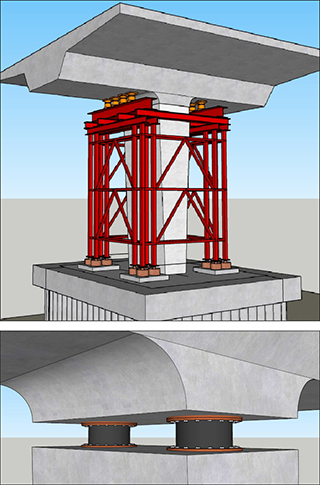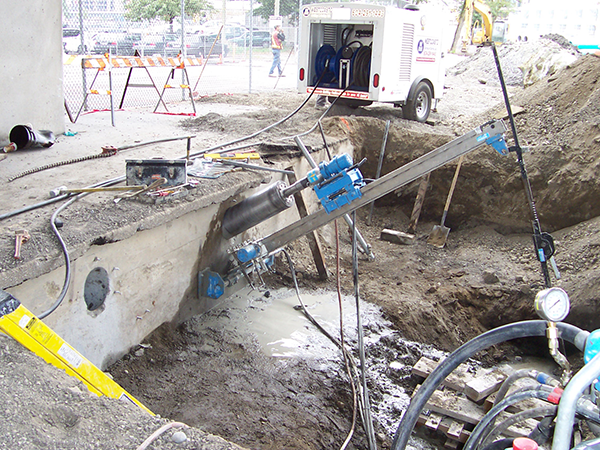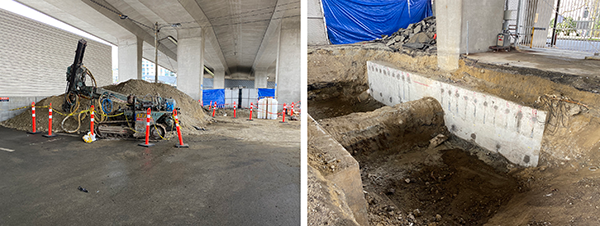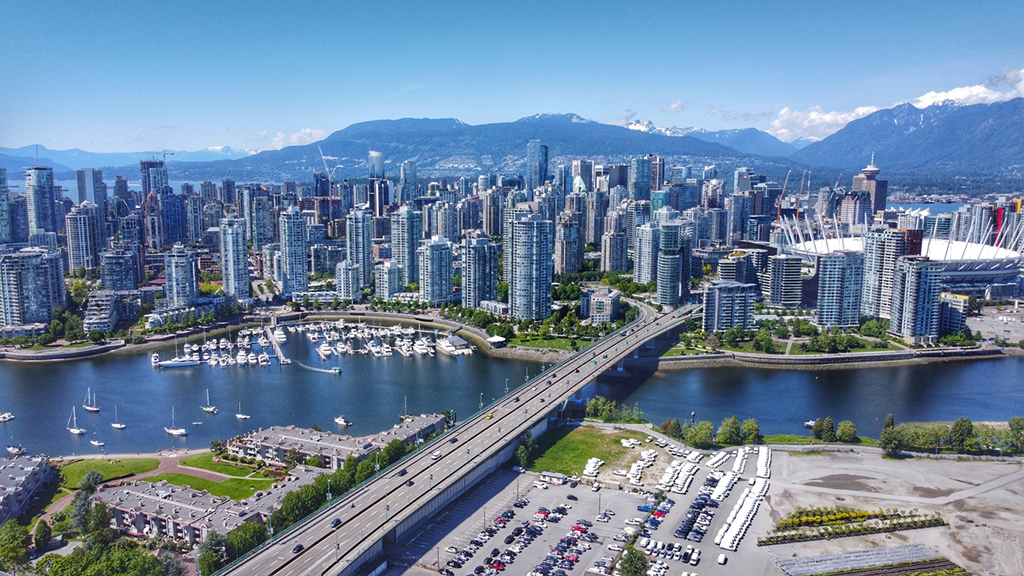A contractor will be selected by the end of this year for major rehabilitation and seismic resiliency work on the busy, 40-year-old Cambie Street Bridge in Vancouver, paving the way for upgrades to start in early 2026.
It will be the second phase of a multi-year project to reduce potential damage the bridge might endure in an earthquake and ensure emergency response vehicles could still use the span.

The $211-million seismic upgrade and rehabilitation program includes a pedestrian/cycle staircase and ramp replacements, 10 foundation upgrades, 65 pier modifications, abutment modifications at six locations, repaving the entire bridge deck and other work such as utility relocates.
In 2022, improvements were made to the south side of the bridge that included new lighting, seismic upgrades to one of the footings, repairs to expansion joints and concrete and stair repainting.
Now, officials are preparing to tender for the much larger second phase of the project. Designs are being finalized for seismic upgrades on the main span and on sections on the north end of the structure.
“The plan is to have someone on board by the end of the year at the very latest,” says Natalia Myles, associate director of streets at the City of Vancouver. “It is going to be a larger phase than the first one that was completed. Our focus for the second phase is going to be on the marine span of the bridge and on sections on the north end of the bridge. That’s going to be a pretty big phase.”
A report to council by Liz Jones, general manager of finance and supply chain management at the city, noted Vancouver is in an active seismic region that could be impacted by an earthquake at any time.
“Given the high likelihood of an earthquake in B.C. and the significant economic impacts expected, it is important to continue prioritizing seismic upgrades of critical city infrastructure to modern seismic standards,” she wrote. “One such piece of critical infrastructure is the Cambie Street Bridge, which is vital for maintaining a resilient transportation network that will support emergency response and recovery after an earthquake.”
The bridge is one of three city owned spans that cross False Creek and connect the densely populated downtown peninsula with the rest of Vancouver. The crossing has five vehicle lanes and is a major transit route, with more than 13 million vehicle crossings annually.

The work is aimed at enhancing the bridge’s seismic resilience by significantly reducing the potential damage it may sustain from an earthquake. As a result, emergency vehicles will be able to use the bridge shortly after an earthquake and repair costs to fully reopen the bridge will be minimized.
Myles says the work includes installing seismic isolation bearings on existing columns of the bridge, which will absorb a lot of the lateral motion from the sway of the span during an earthquake.
“All that energy gets stored by them. And then the type of forces that the actual foundation sees as a result of that are much less. So, we don’t need to upgrade all the foundations which is amazing. We were thrilled when we found out that this approach would work for this bridge.”
In other words, the upgrades will enable the bridge to bend but not break during an earthquake event.

“The bridge, as it is right now, would move with some seismic movements,” explains Myles. “What we’re trying to do is integrate some sort of flexible elements to it that will dissipate the force for the kind of damage that the foundations will actually see. It will make the structure less rigid.
“Something rigid is not a good thing for a seismic scenario.”
Future phases of work will include more localized foundational and seismic upgrades and rehabilitation work, followed by paving of the deck with a specialized material that will make the surface more waterproof.
“It’s almost like the icing on a cake,” says Myles.
The long-term rehabilitation needs of the bridge will also be reduced.
The project will face its challenges, though, as the bridge will remain in operation while the work is being done.
“It’s one of the key connections between the dense downtown and the rest of Vancouver, and obviously it’s a very important connection to all its users,” explains Myles. “So, we work closely with our colleagues and with our previous contractors and our current contractors and future contractors to make sure that there’s always some lanes in each direction for travel.”
When dealing with foundations, there are also a lot of buried utilities that could pose challenges.
“We’ll probably have to quickly respond to new information with our consultants and contractor,” Myles says. “We’re doing our best to collect everything we know now to be comfortable later.”



Recent Comments